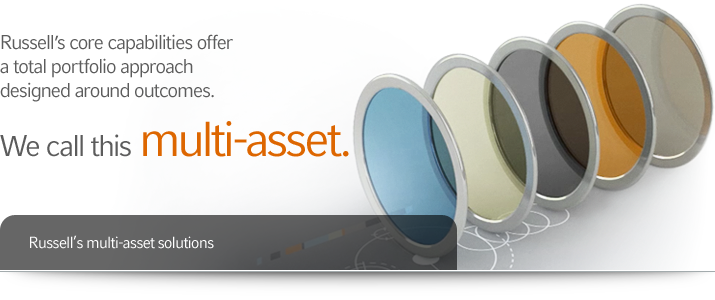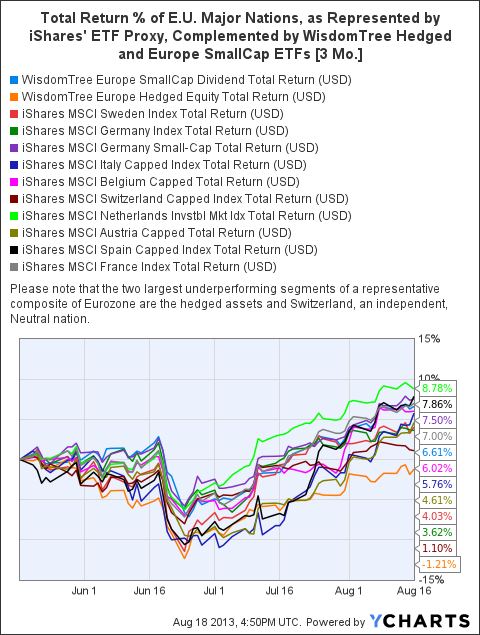What Are the Core Asset Classes for Total Return Portfolios
Post on: 9 Май, 2015 No Comment

One of the most important questions for investors and advisors is identifying a set of asset classes that will be considered for inclusion in a portfolio. Some people will decide that all they need or want is one broad stock market index fund and one bond fund. Others will choose to include Real Estate Investment Trusts (REITs) and commodities. There are well-thought-out arguments that inflation-protected government bonds (TIPS) are a major core asset class. It is also quite common for investors or advisors to break stocks out into value vs. growth and small cap vs. large cap.
I approach this problem by trying to identify asset classes that provide unique sources of risk exposure. The primary source of risk for stocks is simply market risk. U.S. stocks, international developed-market stocks, and emerging market stocks largely move together because of changes in the stock market as a whole. Treasury bonds provide fairly pure exposure to interest rate risk. Commodities provide exposure to inflation risk. REITs also provide exposure to inflation risk. I identify which asset classes provide value in building a portfolio by testing how correlated asset classes are to one another. If two asset classes have extremely high correlation, they do not provide unique value. For an introduction to this approach, see the following article .
In this article, I will provide my list of what I believe to be the core asset classes that investors will consider as part of a well-diversified portfolio, as well as providing examples of relevant funds. This discussion is informal, providing a starting point for thinking through which asset classes are worth looking at, based on my experience with portfolio analysis and stress testing. In this discussion, I am focusing on portfolios designed for total return rather than portfolios designed for income. A total return strategy assumes that investors are indifferent as to the fraction of returns that come from price appreciation vs. dividends, bond yield, or other distributions.
Bonds
You can choose to get all of your bond exposure in a single fund, using a broad bond index such as AGG or BND . These funds include government bonds and corporate bonds with a range of durations.
If you want to go beyond a single bond fund, the following asset classes can add value in the process of building a diversified portfolio:
- Short-, intermediate-, and long-term Treasury bonds (SHY. IEF. TLT. respectively)
- Investment-grade corporate bonds (LQD )
- Inflation-protected bonds (TIP )
- Municipal bond (MUB. PZA )
- Emerging market bonds (EMB )
As far as the bond (aka fixed income) portion of your portfolio is concerned, there is no reason to have more bond classes than these. If you want to make this list even shorter, you can make do without IEF . If you have short-term and long-term Treasury bonds, intermediate-term bonds and emerging market bonds are not crucial. If you really wanted to limit the number of asset classes, emerging market bonds are not crucial. Emerging market bonds have risk exposure from a number of different factors, including currency risk, but much of the return from emerging market bonds is highly correlated to investment-grade corporate bond indexes and broad bond indexes. Simply put, I don’t find much incremental value from adding emerging market bonds to a diversified portfolio.
Stocks
The simplest way to get exposure to the stock market as a whole is with a total market stock fund such as VTI . For those investors who are willing to hold a number of funds in order to have exposure to stocks, the following is a list of what I have found are valuable core holdings:
The most unusual features of this list are that there is no specific index that focuses on developed international stocks, such as the EAFE index. In research over the years, I have found that the EAFE index simply provides no net diversification benefit when we already have exposure to a total market index. The returns from the EAFE index are highly correlated to the returns from the S&P 500, so there is minimal value to be had by combining these two asset classes.
The stocks of energy firms (think Exxon and Conoco) have consistently shown up as valuable portfolio elements in my portfolio analysis studies. These types of stocks, represented by funds such as IGE and VDE ), add to expected return and/or reduce portfolio risk, even though this sector is itself quite volatile.

Utilities are a special asset class for a number of reasons, although they look less attractive from the perspective of portfolio theory as of the end of 2012.
Other Asset Classes
The most important additional asset class for total return investors is commodities. There are a variety of ways to obtain exposure to commodities. Two funds that use what is called a fully collateralized futures strategy are DBC and DJP .
Commodities are a complex asset class from the perspective of financial theory, but a broad commodities index should effectively track inflation. In addition, commodities funds such as DBC and DJP invest in a basket of futures contracts and there is compelling research that suggests that this approach has historically provided risk-adjusted returns comparable to stocks.
Gold has gotten considerable attention in recent years and GLD provides exposure to this commodity. Beyond tracking inflation, it is unclear why gold is desirable. That said, gold has seen a massive rally in recent years and there are investment theories—notably Harry Brown’s Permanent Portfolio —that suggest that gold deserves inclusion in a long-term asset allocation.
How Many Holdings do You Need?
The real question that most people want to understand is how many of these core asset classes they need to hold. It is perfectly natural to try to minimize the amount of work needed to maintain a portfolio and fewer holdings are, in general, easier to manage. When we designed the Target Date Folios, we had no particular goal of minimizing the number of asset classes included, but these portfolios typically hold ten or fewer ETFs.
David Swensen, the highly successful manager of Yale’s endowment, recommends a portfolio for individual investors that holds only six funds. The funds included are a total stock market index, an international developed markets index, an emerging markets stocks index, a REIT index, a long-term Treasury bond index, and a TIPS fund.
Diversification is not about how many funds you hold, but rather how the funds in a portfolio work together. In general—and this is just a rule-of-thumbit should be possible to build a well-diversified portfolio with ten or fewer funds. Keeping a portfolio of as many as ten funds rebalanced appropriately to your target allocations can take some work, which is precisely why Folio Investing developed tools to allow investors to efficiently rebalance back to target weights with a single operation.
Final Thoughts
The list of core asset classes in this article is just my selection, and other research may lead to other selections. The specific inclusion of energy stocks (VDE ) and utility stocks (IDU ), along with the exclusion of a broad developed-market international stock fund (such as one that tracks the EAFE index) are the most unconventional features of this list.
While a fully-diversified portfolio may contain ten or fewer funds, the specific choices of funds can, and probably will, evolve through time. Back when the Target Date Folios were introduced in 2007, for example, there was a substantial allocation to TIPS and there was no municipal bond exposure. Today, many of the Folios contain little or no allocation to TIPS and a substantial allocation to municipal bond funds.
Even for those people who agree on this list of portfolio building blocks, there remain many decisions to make as to how exactly to choose allocations, but narrowing down the universe of asset classes which merit consideration is an important first step.
Related Links:
Folio Investing The brokerage with a better way. Securities products and services offered through FOLIOfn Investments, Inc. Member FINRA/SIPC.














